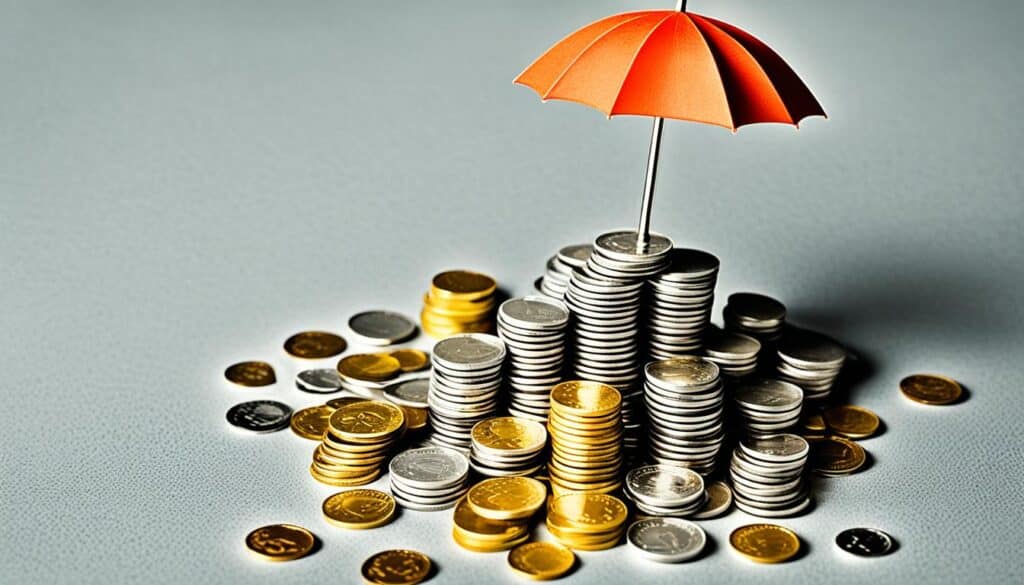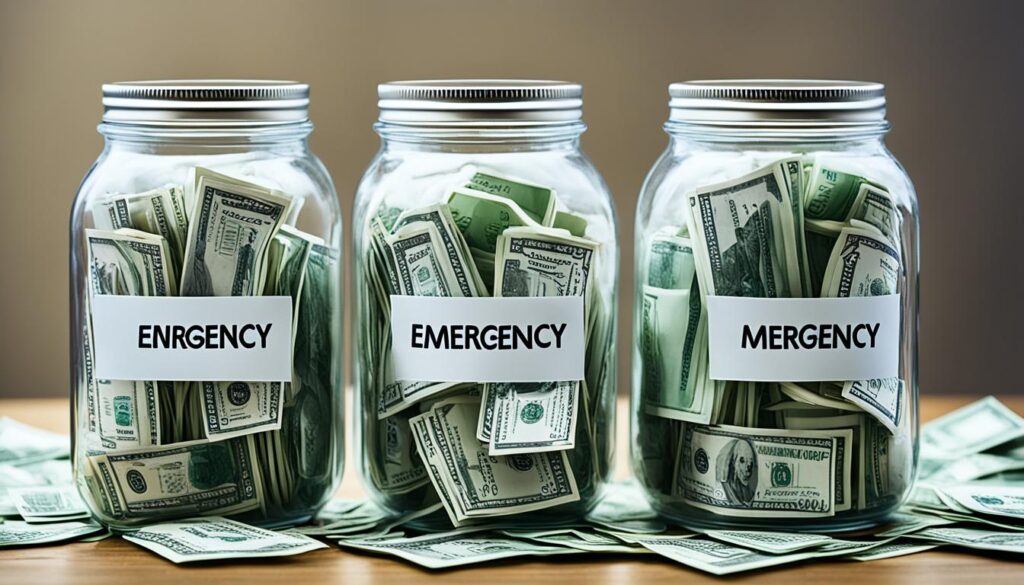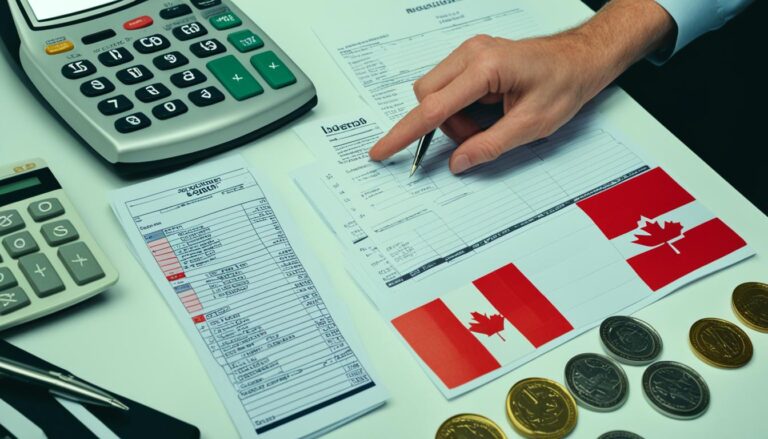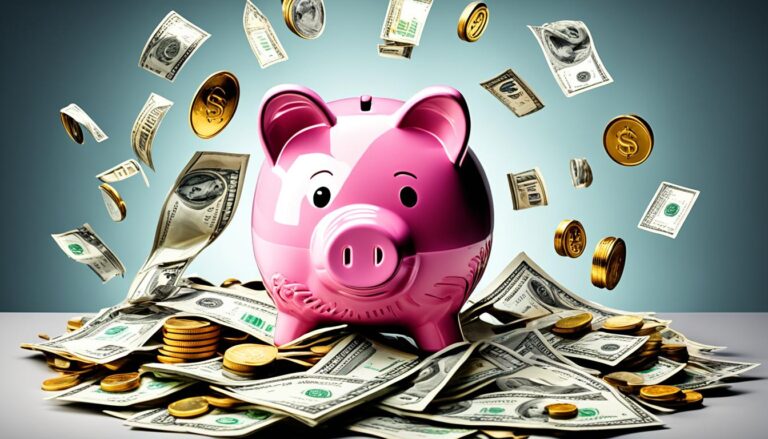Emergency Fund vs. Rainy Day Fund: Understanding the Difference and Why Both Are Essential in Canada
As you try to put your finances in order, there are two very important savings you should have – the emergency fund and rainy day fund. Knowing the difference between an emergency fund and a rainy day fund is key. They both play unique roles in keeping your finances safe. A rainy day fund is for small, expected costs like fixing a broken appliance or some not-so-expensive car repairs. An emergency fund, however, is for big, unplanned financial crises like losing your job or getting very sick.
For Canadians who live paycheck to paycheck, having these funds is crucial. They help avoid debt and financial stress when surprises come your way.
Key Takeaways
- An emergency fund covers major unexpected expenses like job loss or severe illness.
- A rainy day fund handles smaller, expected costs such as appliance or car repairs.
- Automating savings can help in effectively building both types of funds.
- Maintaining both funds can prevent financial hardship and reliance on credit cards.
- Review your financial goals regularly to adjust contributions based on changing circumstances.
What is a rainy day fund?
A rainy day fund is a type of savings done for expected but infrequent expenses. It is used to cater to financial responsibilities that are not often captured in your monthly budget but are expected to happen over time. Rainy day funds can be used for expenses such as cheap car repairs or maintenance, home maintenance, routine medical expenses, veterinary bills, etc.
What is an emergency fund?
Unlike a rainy day fund, an emergency fund is used for unexpected expenses such as a job loss or income reduction, a major car repair, or inexpensive home repairs/maintenance. An emergency fund is a financial safety net that helps you stay afloat when expensive financial challenges arise.
Rainy day fund vs. Emergency fund
As you may have already noticed from the definitions above, a rainy day fund is different from an emergency fund. Rainy day funds are used for expected but infrequent expenses whereas emergency funds are for costly unexpected emergencies.
Depending on your income and expenses, your rainy day fund should be an estimate of 1-2 months of your monthly living expenses. An emergency fund is often advised to be 3-6 months of your monthly income or living expenses. The idea of saving an emergency fund is to be able to afford your lifestyle for about 3-6 months if you lose your income. On the other hand, rainy day funds help you get through expected, occasional expenses.
Saving for unexpected expenses in Canada
In Canada, it’s essential to save for unexpected expenses to stay financially stable. Many Canadians barely make it from one paycheck to the next. This makes having money set aside for surprises very important. Without a financial safety net, people tend to fall back on using their credit cards when emergencies arise. This leads to the accrual of high-interest debt and the stress of growing interest charges. By having emergency funds and rainy-day savings, you avoid financial chaos when faced with sudden costs.

The exact amount to save changes based on your family size, job status, and personal spending. When you’ve decided on the amount to save, both emergency and rainy-day funds should be kept in high-interest savings accounts for quick access to cash when it’s needed.
However, if you’re dealing with high-interest debts, like on credit cards, it’s smarter to clear these first before you start saving. Even small savings can add up, like $20 a week, which becomes $1,040 a year. You can keep your emergency fund target between $3000 and $5000 so you can have enough room to clear your debt. This is not to mean that you should keep your savings small but saving a small amount consistently is better than saving a lump sum inconsistently. In addition, it’s good to revisit your financial goals frequently. Adjust your savings goal as your life changes, to meet your emergency fund goal sooner.
Interestingly, about 36% of Canadians have no emergency fund at all. And 40% wouldn’t last a month on their savings if an emergency hit. This shows how common financial uncertainty is.
Here are some additional strategies to boost your savings:
- Cutting unnecessary expenses
- Automating savings transfers
- Starting with small saving amounts and gradually increasing them
- Depositing windfalls, such as tax refunds or bonuses, directly into your savings account

To save regularly, aim for a monthly savings goal and automate your savings. This method simplifies managing your money and helps avoid financial stress from surprise events. Keep in mind, having these funds is one thing. Knowing how and when to use them well is another. There is no hard and fast rule about how to use these funds. Just make sure that when you deplete this fund, you save it back for future needs.
If you need help setting up a savings plan, talk to a financial advisor to make a plan that fits your needs.
where to keep your rainy day fund savings for easy access when needed
Keeping your rainy day funds where you can easily get them is essential. High-yield savings accounts are a good choice because they offer both easy access and good interest rates. Canadian banks such as EQ, Scotia Bank, and TD Bank all have great options. These accounts give you interest rates from 4% to 5.50%, which is more than what regular savings accounts offer. Cash management accounts are also a great option. They mix features from checking, savings, and investment accounts, making them a flexible choice for your rainy day funds.
The table below defines the purpose, recommended amount nd savings strategy for both rainy day and emergency funds.
| Fund | Purpose | Recommended Amount | Savings Strategy |
|---|---|---|---|
| Emergency Funds | Major unforeseeable expenses (e.g., job loss, medical bills) | Three to six months of living expenses | Automate savings deposits, money market accounts |
| Rainy Day Funds | Minor irregular expenses (e.g., car repairs, appliance replacements) | Depends on anticipated small expenses | Set aside portions of each paycheck |
adjusting your savings strategy over time to ensure both funds are adequately funded
As life changes, keep tweaking your savings plan. Begin with small, steady contributions to ease into it. Use auto-save features to keep saving regularly, and steer clear of new debts or credit cards. Over time, check if your funds match up with your new income, spending, and goals. This way, you’ll keep both funds ready, ensuring your financial safety.
Conclusion
Keeping both an emergency fund and a rainy day fund is key for your financial safety in Canada. Each fund serves a special purpose in managing expected and unexpected expenses. The emergency fund is for big financial hardships, while the rainy day fund covers smaller, unplanned but occasional costs. Building both funds keeps you out of debt and secures your financial future.
Okay! I’m glad you read to this point! It will be great to know how you save for emergency and rainy-day funds. Share your tips in the comments to help and inspire others. Also, check out more personal finance tips on our blog to keep improving your money management skills.

Ogunjobi Oluwamuyiwa Felix preferred to be called Muyiwa Felix, is a personal finance coach and Insurance advisor. He creates content that addresses the core of personal finance in Canada, the United States, and the world at large. Daily, he meets up with clients who are interested in financial risk management, income protection, wealth-building, retirement planning, and tax-efficient investing strategies.






